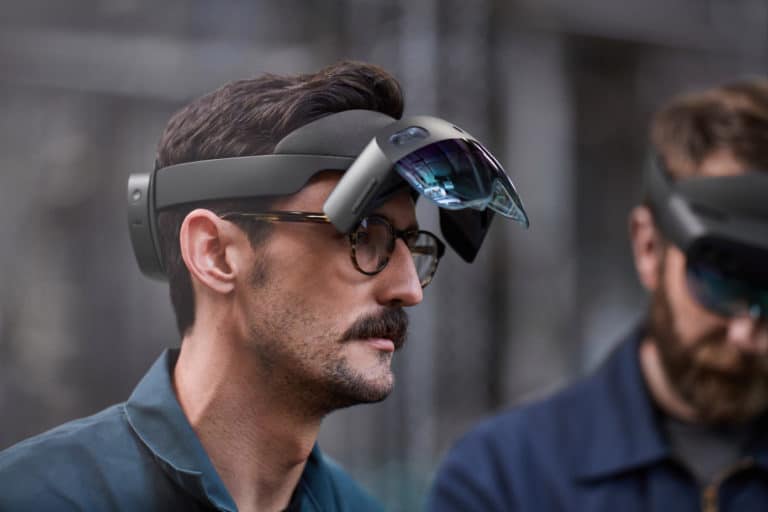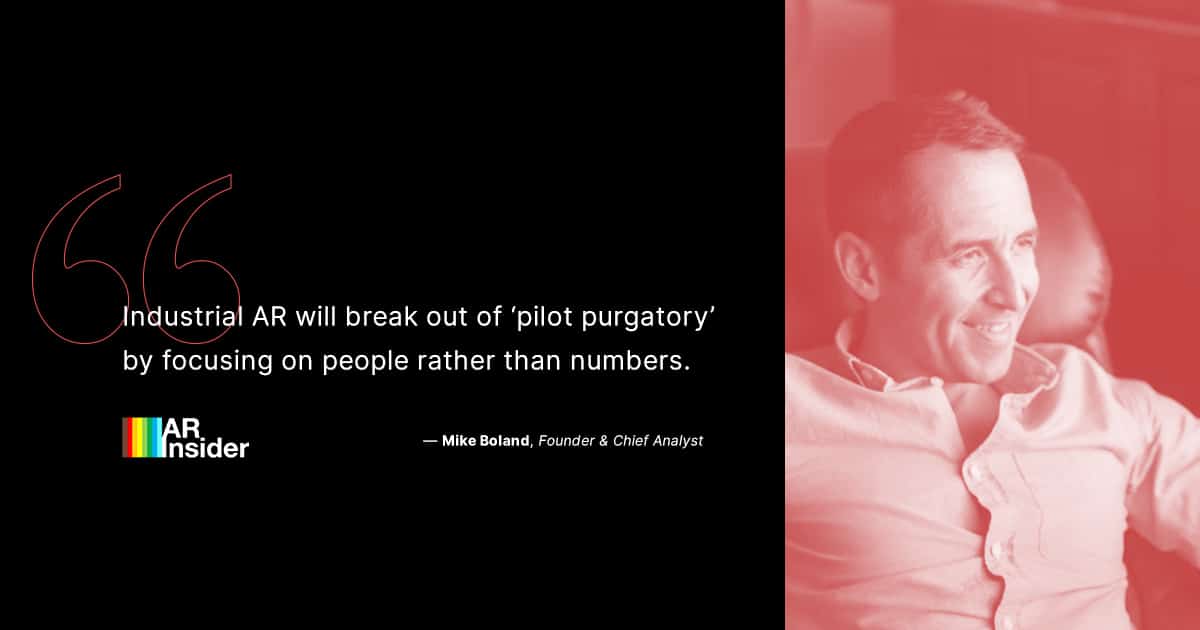
This article is the latest in AR Insider’s editorial contributor program. It excerpts Unity’s latest report “Top 2020 Trends: Enterprise AR & VR,” with commentary from industry executives, including AR Insider Editor Mike Boland. Authors’ opinions are their own.
Top 2020 Trends: Enterprise AR & VR
by Unity

In “The Incredible Impact of Enterprise AR & VR,” we spotlighted the innovative work of Lockheed Martin, which has seen a tenfold ROI building products virtually versus physical builds and testing. Notably, VR-assisted validation saved them more than $10 million in costs in one year.
Mixed reality (XR) programs that produce results of this scale and magnitude have historically been rare and exceptional, but according to the dozen-plus industry experts who shared their insights with us, that’s changing. Here’s why 2020 is shaping up to be a year to remember for XR
in the industrial sector:
— The proof is in the proof of concept. The question is no longer if XR is a worthwhile investment; it’s how to scale the positive results from initial forays into the technology to “iterate faster, mitigate risks, and increase high-quality throughput.”
— XR is primed to enter its “grown-up phase.”2 With its effectiveness well established, the time has come for XR to move beyond “fancy demos, proofs-of-concept and pilots” to become “an indispensable digital productivity tool”3 used across the entire product lifecycle, from R&D to marketing to maintenance. There’s an industry-wide need to “put in the arduous work of scale,”4 but in so doing companies can achieve “faster time to market, lower total costs, better-trained
employees, [and] happier customers.”
— XR will reach meaningful scale, spurring a new wave of companies to join the party. It’s projected that by 2020 “there will be more than a billion people who could have an AR experience with their own devices.”6 Expect even cautious companies to finally follow in the footsteps of their pioneering counterparts as XR becomes more accessible and mainstream, driven by a wave of new and improved HMDs, mobile AR and standalone VR, and the onset of 5G networks.
 David Golembiewski: Director of Enterprise Sales – Automotive & Manufacturing Magic Leap
David Golembiewski: Director of Enterprise Sales – Automotive & Manufacturing Magic Leap
Greater adoption of spatial visualization helps manufacturers iterate faster, mitigate risks, and increase high-quality throughput.
Spatial computing is transforming the way companies design and manufacture products, as well as how they train the employees responsible for these jobs. Using spatial visualization, companies can optimize their design and manufacturing processes and become more efficient.
In 2020, we expect more companies to follow in the footsteps of some of the largest automakers and manufacturers, who are leveraging spatial computing and the power of 3D spatial visualization to:
— Rapidly ideate and iterate on their product designs to shift left and upstream in their product development processes – before ever making a physical prototype
— Understand how changes to CAD will fit by visualizing updated digital models in their intended environments – preventing problematic parts from making it into their products
— Onboard workers quickly and provide spatial guidance to enable them to do their jobs with greater efficiency – increasing product quality while reducing production time, costs, and defects

Mike Boland: Founder & Chief Analyst, ARtillery Intelligence
Industrial AR breaks out of “pilot purgatory” by focusing on people rather than numbers.
Industrial AR continues to hold lots of promise. But like many AR subsectors, it’s taking longer than expected to materialize. This has less to do with the technology’s efficacy – which is strong – than roadblocks from human and organizational issues.
We’re talking inertia, politics, changes in management, and fear of new technology among stakeholders such as frontline workers. The biggest symptom of these stumbling blocks is the dreaded “pilot purgatory.”
ARtillery Intelligence has identified sources and solution areas, classified as the Three Ps: People, Product and Process.
— For people, it’s about customizing AR’s ROI story to individuals at all levels of the organization… not just the C-suite.
— For product, it’s about addressing real operational pain points, uncovered through ground-level research.
— For process, it’s about multidisciplinary prototyping rather than top-down innovation. Industrial enterprises that tackle these human-centric issues, rather than just ROI figures, have a better shot at enterprise-wide adoption.
Timoni West: Director of XR Research, Unity Labs
 Responsive design reflects the real world.
Responsive design reflects the real world.
Computers are taking in massive amounts of world data and are able to instantly process and do something useful with it. This is what makes augmented reality possible.
UX designers will have to adjust accordingly. Instead of making responsive design just for different devices, they’ll have to start thinking about responsive design as computers react to everything in the real world. Gestures, voice, gaze, time of day, how many people are in the room,
and where you are: all of these variables are now new user inputs that have to be taken into account.
Read the full report here.
For deeper XR data and intelligence, join ARtillery PRO and subscribe to the free AR Insider Weekly newsletter.
Disclosure: AR Insider has no financial stake in the companies mentioned in this post, nor received payment for its production. Disclosure and ethics policy can be seen here.

 David Golembiewski: Director of Enterprise Sales – Automotive & Manufacturing Magic Leap
David Golembiewski: Director of Enterprise Sales – Automotive & Manufacturing Magic Leap